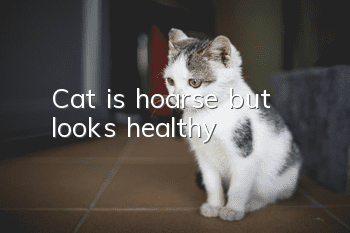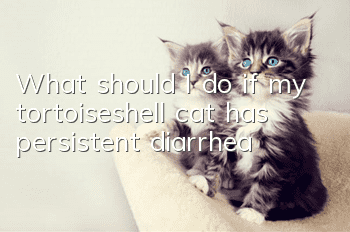Symptoms and treatments of uremia in cats

Uremia is closely related to renal failure. Basically, cats with uremia have problems with their kidneys. Therefore, uremia is the inability to excrete metabolites and toxic substances from the body in the late stage of renal failure. A syndrome causing autointoxication. So what should we do if a cat has uremia? Let’s explain.
1. Cause
Kidney failure, bladder rupture, and complete blockage of the ureters or urethra from various causes.
2. Symptoms
In addition to symptoms of acute or chronic renal failure, such as oliguria or anuria, imbalance of water and electrolytes, azotemia, etc., there may also be symptoms of dysfunction of various systems, such as lethargy, coma, paroxysmal seizures, etc. Sexual excitement; loss of appetite, vomiting, diarrhea; occurrence of Chen Shier's breathing or heavy breathing; high blood pressure, heart failure, cardiac arrest; anemia, bleeding tendency; excessive sweating and itching.
3. Treatment
Uremia is the most serious stage of oliguria or anuria in renal failure. It is also the stage in which the compensatory adaptability of the kidneys is significantly reduced or even completely lost. Therefore, the treatment principle should be to replenish fluids in time and quickly correct the imbalance of water and electrolyte balance. , correct acidosis, promote the excretion of toxic substances, prevent shock and dehydration, and provide symptomatic treatment according to the specific situation.
1. Use fluid therapy to prevent dehydration of the body. The amount of fluid replacement (ml) is equal to the product of dehydration percentage and body weight (grams). The dehydration rate can be determined based on clinical manifestations: when the dehydration rate is 5%, the skin elasticity is slightly reduced; when it is 7%, the eye sockets are slightly sunken, the skin folds are tent-like, the capillary refill time is prolonged, and the oral mucosa is damaged. If it is dry, shock symptoms may occur; when it is 12% to 15%, shock symptoms such as accelerated heart rate, weak pulse, and cold peripheral limbs may occur.
When hyperkalemia occurs in the oliguric phase, give intravenous injection of normal saline or sodium lactate Ringer's solution; when there is life-threatening hyperkalemia, use 30 ml of 10% glucose plus 1 unit of insulin at a rate of 1 ml/ Intravenous injection of kilogram dose, or oral administration of 0.5 ml/kg 10% glucose calcium borate solution to correct hyperkalemia.
When accompanied by acidosis, give 10 to 30 ml of 5% sodium bicarbonate solution intravenously; or 5% glucose saline intravenously.
When hypokalemia occurs during the period of polyuria, use sodium lactate Ringer's solution plus 13 mmol/L potassium chloride for rehydration until the serum potassium level returns to normal.
When there is hyponatremia, use normal saline for rehydration or intravenous infusion of 3% hypertonic saline; when there is high blood sodium, use 5% glucose solution and a variety of electrolyte solutions as replacement fluids.
2. After dehydration is corrected, osmotic diuretics can be used to relieve azotemia, such as 10% to 20%% mannitol solution 1 to 2 ml/kg, intravenously infused at a rate of 4 ml/min.
3. For dogs and cats with oliguric or anuric renal failure, the β-adrenergic agonist dopamine can be used. It has the effect of increasing renal blood flow and glomerular filtration. Intravenous infusion at a rate of 2 to 4 micrograms. If the heart rate increases significantly, the dose should be reduced.
4. When renal function still does not improve 48 to 72 hours after infusion, peritoneal dialysis therapy should be performed quickly. A certain concentration of dialysate is injected into the abdominal cavity by intraperitoneal injection (injecting a needle into the left ankle). After 30 to 60 minutes, the waste products in the blood penetrate into the abdominal cavity through the peritoneum, and the high-concentration substances in the dialysate can Penetrates into the blood to eliminate waste and maintain electrolyte balance in the blood. According to the abdominal puncture method (inserting a needle at the lowest point in front of the umbilical hole under the abdomen), the dialysate is released.
5. For cases of bladder rupture or urethral obstruction, surgery must be performed immediately to repair the bladder or remove foreign bodies in the urethra (such as urethral stones, etc.).
- Teach you how to train pet cats to jump through rings? Pet cat training techniques!
- Why does a cat vomit yellow water and vomit cat food?
- What should I do if cat moss recurs and the old ones heal but new ones appear again?
- What issues should you pay attention to when your cat is pregnant?
- Why does a kitten bark even though it doesn't eat cat food?
- How is cat distemper transmitted to other cats?
- Why do cats need to bury their poop?
- What's wrong with the black stuff on the cat's mouth?
- Why are cats afraid of people?
- What to do if a pet cat is picky about food? How to get rid of the bad habit of picky eating in a pet cat?



